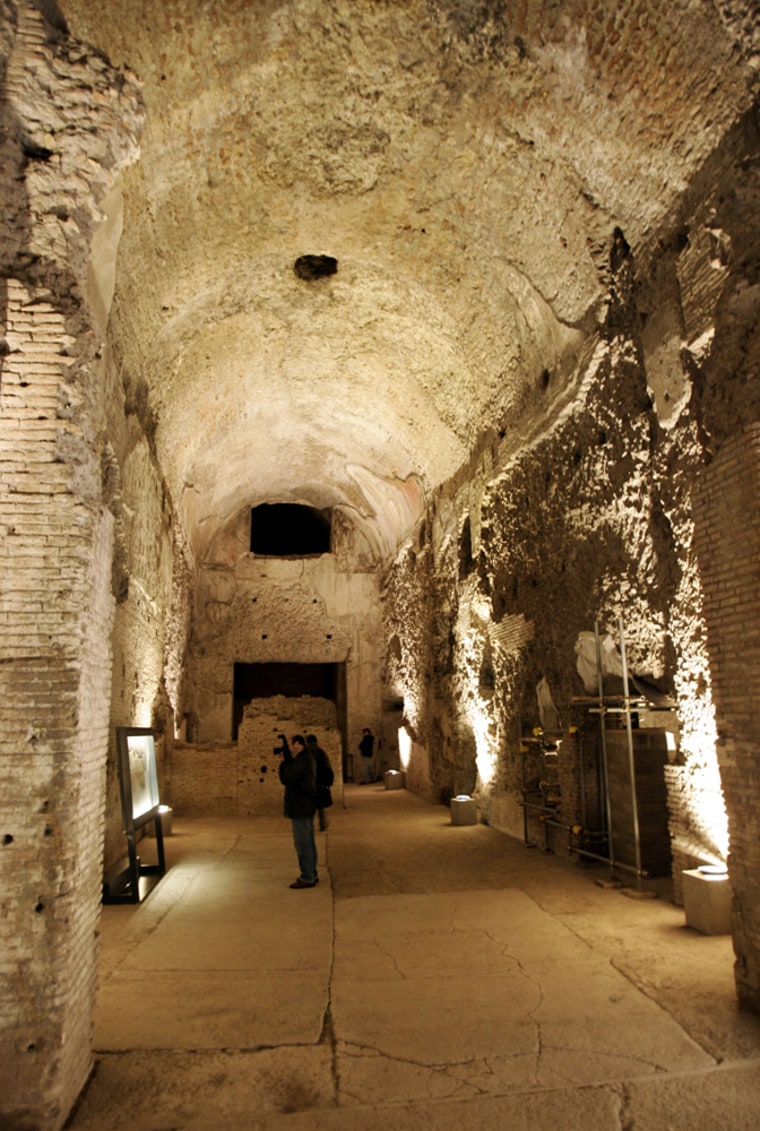Nero's Golden Palace will be partially reopened to tourists in January, even while archaeologists and restorers keep working to shore up the ancient imperial residence which had been in danger of collapsing because of heavy rains.
Starting Jan. 30, small groups will be allowed to visit about half of the sections that were open before rainwater infiltrated the building a year ago, damaging frescoes and raising safety concerns, officials said during a tour on Tuesday.
Restoration of the 1st century palace will continue during the tours and special scaffolding has been set up to protect visitors from any falling debris.
Tourists will also be allowed to climb some of the scaffolding for a close-up view of frescoed ceilings, standing alongside restorers painstakingly cleaning the paint from algae and saline deposits, Culture Minister Francesco Rutelli told reporters.
More extensive work will be carried out in the eastern wing of the palace, which will remain closed to the public. That $5 million project is scheduled to be completed in two years, archaeologists said.
"It's not a final intervention, there will never be a final intervention," Rutelli said. "The Domus Aurea will have to undergo constant maintenance."
The Golden Palace - also known by its Latin name, Domus Aurea - rose over the ruins of a fire that destroyed much of Rome in A.D. 64 and was completed in A.D. 68, the year the unpopular Nero committed suicide amid a revolt.
The vaulted ceilings of the sprawling residence were once encrusted with pearls and covered with ivory. Its frescoed halls and winding passageways, today mostly underground, were preserved thanks to the emperor Trajan, who buried the symbol of Nero's megalomania and used it as a foundation for a bath complex.
Even before the latest closure, the dark ruins were plagued with structural problems, threatened by tree roots from a public park above and damaged by holes punched through the ceilings by renaissance painters who lowered themselves in to study the ancient artworks.
The palace was closed for 18 years during restoration, reopening in June 1999. In 2001, the building was briefly closed to public after part of the ceiling collapsed.
Visits take place in small guided groups and must be booked in advance.
